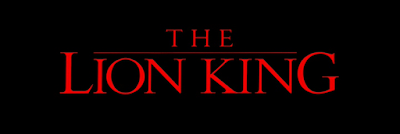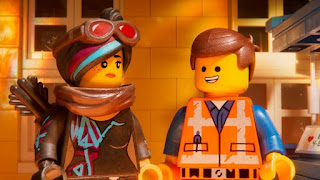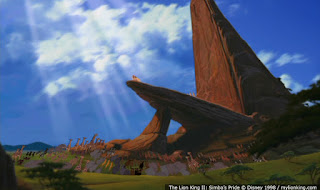Placing The Lion King On The Disney Timeline
A few years ago, a graphic appeared online putting all the animated Disney films in order on a timeline. As a Disney fanatic, this graphic made me undeniably happy. It made watching a Disney film more fun to me because it allowed me to think about possible effects the film before had on the one I was currently watching. However, one part of it bothered me. I consider the 1994 film of The Lion King to be a spectacle and one of the greatest movies the studio has made. On the timeline, The Lion King was placed in 1994 since that was the year of it's release. That didn't sit well with me and so I thought and theorized about where this amazing film could fit on the timeline. The more I thought, the more one of the other films of the Disney Renaissance came to me as a potential sister piece to The Lion King. That film is Tarzan which was released in 1999 and is considered by many to be the ending of one of the most successful financial times of the company. The more I compared the two, everything seemed to click into place. There are three clues in Tarzan that almost seem to confirm that The Lion King takes place during the tale of the lord of the apes.
1. A Lyric of Two Worlds
During the opening sequence of Tarzan, Phil Collins' song Two Worlds is perfectly setting up the tone of the film. Visuals of both Tarzan's gorilla family and his human family are intertwined with each other to illustrate the lyrics of Two Worlds, One Family. One of these lyrics is "A Paradise untouched by man". Usually, the ordinary person would shove this line aside. However, I think it means so much more. To me, this indicates that the beginning of Tarzan is in an area that hasn't been effected by human settlement. What other Disney film is there that takes place in an area of Africa that seems untouched by man? The Lion King.
When doing research for this, I looked up a map of the population of Africa. The map showed that the middle, which houses the jungles of Africa and the savanna, were the least populated of the whole continent. This points us in the right direction. Obviously, it would be a world untouched by man if very limited people lived there. Surrounding the rain forest area is the savanna where the beginning of The Lion King is set. It's confirmed many times in The Lion King Franchise that the Pridelands are in the savanna as it's referred to many times throughout the series. Zazu calls Simba and Nala "seeds of romance blossoming in the savanna" and Timon's mother in The Lion King 1 1/2 telling him to "Look out to the horizon past the trees, over the grasslands'. Due to them being so close to one another, it would make sense that the surrounding areas of Tarzan's jungle would lack in the population department.
2. The Elephant In The Room
One of the major characters of Tarzan is his elephant friend, Tantor (brought to life perfectly by Wayne Knight). Tantor is responsible for a lot of the film's greatest bits of comedy but the lovable elephant isn't afraid to show a little backbone. Aside from Knight's portrayal and Tantor's role as a comic relief, his reddish skin separates him from other Disney elephants like those from Dumbo or even those from the beginning of The Lion King who come to celebrate the birth of Simba. Some may say that Tantor and his herd are simply elephants that are native to the jungle. However, this isn't the case. If you go a little further in The Lion King, Simba's musical number "I Just Can't Wait To Be King" occurs towards the beginning of the second act. It's a vibrantly colored number that basically guarantees toe tapping from the first moment the music starts up. Yes, the colors change drastically to reflect Simba's childlike nature (i.e. purple ostriches and green striped zebras). The three things that remain the same are Simba, Nala, and Zazu.
At the beginning of the musical number, Zazu lands face first in mud and then wipes his face off on what he suspects is a leaf. What he ends up doing is wiping his face on an elephant ear. The shot zooms out to reveal this:
Look familiar? Both the elephants in "I Just Can't Wait To Be King" and Tantor's herd from Tarzan share identical coloration. Clearly, this elephant is under the fantastic lens that the song calls for but, three out of the five songs in The Lion King have some kind of fantastic coloration to them. These songs being "I Just Can't Wait To Be King", "Be Prepared", and "Hakuna Matata" (which will be talked about more in the next section). Even though all of these sequences undergo a color change, all of them have moments that are grounded in the reality of the film. In "I Just Can't Wait To Be King", these real characters are the core three of Simba, Nala, and Zazu, the water, and strangely, the anteaters on the animal tower. How does this apply to the elephants? Well, if Tantor's herd was only native to Tarzan's jungle, why would The Lion King elephants turn this particular shade of red during this scene? It could be that the elephants in Tarzan are a subspecies of the ones seen in The Lion King and the "I Just Can't Wait To Be King" color change is meant to show the connection between them. Or maybe its just the over analyzing mind of a Disney-fanatic.
(Also, side-note, there is a single gorilla in The Lion King and it appears when the animals are trampling Zazu)
3. Location, Location, Location

Three things that people always remember about The Lion King are the presentation of Baby Simba to the Pridelands, Mufasa's death at the hands of Scar, and that Hakuna Matata means no worries. The problem free philosophy comes at a time in Simba's life that he needs to escape the tragedy of his father's death. Hakuna Matata is a safe haven for the young prince and adopts the lifestyle once he becomes friends with Timon and Pumbaa. During the "Hakuna Matata" sequence, the warthog and meerkat duo take Simba from the dry desert into the lush jungle that they call home. Immediately, this place is vastly different from the Pridelands. When revisiting The Lion King in order to place it on the Disney Timeline, I noticed something in the background when Simba is taking in the landscape of the jungle for the first time. We witness the full landscape when Simba asks "You live here?". In the middle of the landscape, there's large mountain that stretches into the sky with a waterfall flowing from it. The more I thought about it, the more that I realized that we see a very similar spot to this in Tarzan. During the first act of Tarzan, we meet Tantor's herd and this shot is the first thing that is presented to us:

To the typical viewer, this would just be a pretty background that Disney designed. But, to me, I think this location is the same mountain that is visible in the "Hakuna Matata" sequence in The Lion King. Clearly, the jungle that Timon and Pumbaa live in stretches on for miles. So, it's very possible that Tarzan and his gorilla family inhabit the same jungle. I believe that this very location where Tantor's family lives is visible in The Lion King. Everything in the shot introducing the herd points to it. It is clearly a mountain with a large flowing waterfall and green vegetation surrounding it like the one scene in The Lion King. All the red elephants and Phil Collins lyrics get wrapped up nicely when this location is taken into account.
Conclusion:
Figuring out The Lion King's place on the Disney timeline was a fun project to work on. It made me think about the different films that Disney produced. It did require a look at the role of jungles in their films. After picking Tarzan out as the candidate, the clues clicked. I place The Lion King on the Disney timeline happening at the same time as Tarzan.
All images taken from my DVD of The Lion King and my digital copy of Tarzan









Comments
Post a Comment